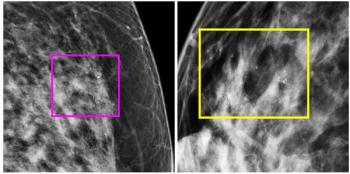
- Diagnostic Imaging Vol 31 No 12
- Volume 31
- Issue 12
Defending mammography in the face of continued attacks
This month's cover story marks a departure for us. Normally, we would feature a clinical review article, or a look at clinical or economic trends written by the magazine's staff.
This month's cover story marks a departure for us. Normally, we would feature a clinical review article, or a look at clinical or economic trends written by the magazine's staff. Instead, we're highlighting a commentary written by Dr. Daniel Kopans, a professor of radiology at Harvard and well-known mammography advocate. In it he dissects and debunks the arguments made by critics of screening mammography and challenges fellow radiologists to step up to the plate to defend it.
In fact, it shouldn't be that difficult a record to defend. As Dr. Kopans explains, most everyone who has looked carefully at the issue concludes screening mammography does reduce deaths from breast cancer. But Dr. Kopans laments that some critics have been allowed, in peer-reviewed reports, to distort the data and make unsubstantiated claims. The result: women, physicians, public health agencies, and sometimes radiologists are left confused about mammography's true value.
The article comes at an opportune time. Although it was submitted to us in September, recent events have once again raised questions about screening mammography. In an opinion piece in the Oct. 21 issue of the Journal of the American Medical Association, researchers at the University of California, San Francisco, observed that the increased detection of breast and prostate cancer has not come with a similarly sized drop in mortality. Most disconcerting to them is the strong possibility that the apparent discovery of cancers that pose little danger has been accompanied by overtreatment.
Overtreatment is a relatively new term to the mammography lexicon and is being used to attack the process. Generally it is taken as the detection of a lesion that won't turn into a breast cancer leading to morbidity or mortality. Estimates of its existence vary widely. One study in 2005 put its incidence at less than 5% of cases diagnosed at prevalence screens and less than 1% of cases diagnosed at incidence screens (Breast Cancer Research 2005;7:258-265). Another, by the Cochrane Center-a group not exactly friendly to mammography screening-put it at an astounding 52% (BMJ 2009:b2587).
Without going into the studies in detail, one thing we can conclude from these wide variations is that there isn't a great deal of agreement on how to measure overdiagnosis from screening mammography.
And where does this leave us? We know that mammography screening isn't perfect; it misses some cancers that should be removed and, perhaps (and to what extent is unclear), leads to the removal of cancers that may not be a threat. We also know, without a doubt, that screening mammography has led to a reduction in deaths from breast cancer. Is it worth the risk of overtreatment? I suspect most or all mammographers and other radiologists will answer yes.
That said, it may be that we've entered a new phase in the discussion on screening for breast cancer, and indeed, for all cancers. The point was made well by Dr. Otis Brawley, chief medical officer of the American Cancer Society, in comments to Greg Freiherr, our business and technology editor.
“Although breast cancer screening may have an overdiagnosis and overtreatment problem, we have studies to show that it saves lives, that it decreases the death rate by 20% to 35%,” he said. “In the past, I've been critical of people who say you're a fool not to get screened. In the same vein, I feel that I should be critical of anyone who says you're a fool if you do get screened.”
It's a nuanced answer, and one we'll need to deal with as we move into an environment where the questions about screening and the use of resources become more intense. For radiologists, the message should be that mammography screening isn't perfect, but it's pretty good, it does save lives, and we are working to make it better.
Articles in this issue
almost 16 years ago
Critical results still go unnoticed on patient EMRalmost 16 years ago
University of Virginia opens center for ablation researchalmost 16 years ago
Coronary CTA exposes plaque risk for diabeticsalmost 16 years ago
Contrast media reactions rarely happen, study findsalmost 16 years ago
Women who skip mammo face higher risk of deathalmost 16 years ago
Rads urge cautious CT use for swine flu workupalmost 16 years ago
Berger urges imagers to be stewards of radiologyalmost 16 years ago
Disaster survivors show early signs of traumatic stressalmost 16 years ago
fMRI lights up gap between consciousness and cognitionalmost 16 years ago
A reply from Dr. Leonard BerlinNewsletter
Stay at the forefront of radiology with the Diagnostic Imaging newsletter, delivering the latest news, clinical insights, and imaging advancements for today’s radiologists.




























